In push hands, the first thing we need to do is to have peng energy. What does this mean? It requires us to be able to lock the opponent on the touch, confront him, without showing any disadvantages. We mustn’t show any weakness at the first place. Only like this, we will have the confidence to win.
What is confidence? Confidence is real gong fu. Without it, there is no use if you just feel good about yourself. How to gain real gong fu? Of course it is through years of training.
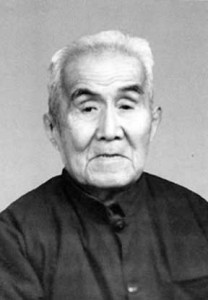
Then next we can use techniques according to the situation. We can continue to peng forward and the opponent will be bounced out. We can lv, pull him in and away backwards. We can also cai suddenly to break his energy line. We can also add the other hand to lie to break his forearm(normally we leave a gap for the opponent to fall. But whatever techniques we use, we have to entice him first.)
The method to entice, requires us not to have any displacement, only ni chan at the point of touch(normally is the outer edge to the palm). This move is very small, the opponent should not feel you are using any technique. Don’t look down on this small method, it belongs to the category of small silk reeling, can change the direction of my move without being noticed. That is, you are ready for the next move without being noticed by your opponent.
Ji normally shows that the back of the palm is facing outwards, which is not only the outer appearance, but also the inner mechanism. As for our Practical Method, there is a requirement that we should not move the touching point with the opponent. The back of the palm facing outwards means that you contact the opponent with the back of the palm and the outer of the forearm, which cannot move. Therefore, we can only move the inner palm and the inner side of the forearm. This way there is a stretch between the inner side of the forearm and the chest, the hand is pushed out by the stretch without any active movements. It appears that Ji is an attack, but it is not, it is to harmonize with the opponent. Harmonization is adherence, using shun chan, like elbow in hand out.
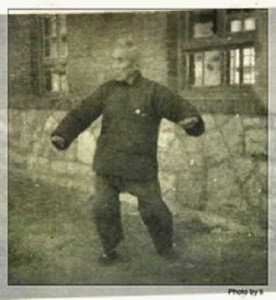
When it is harmonized, the whole hand and forearm are motionless as one piece, followed by an elbow strike. This elbow is a hit. [All attacking actions must be ni chan]. There is no protrusion on the elbow, but the elbow goes with an outward ni chan. If the opponent is not down after the elbow movement, you can’t stop, step up and use the shoulder to kao along this energy. Kao returns to shun chan, so the shoulder itself does not issue any power, it is a follow-up action, and the power is issued by stepping up. In this way, the actions of the hands, elbows, and shoulders are all in one breath. Shun, ni, shun. Changing Palms Three times in Yilu is to practice this movement and sequence, from the tip of the arm which is the back of the hand, to the middle which is the elbow, to the root which is the shoulder. Changing Palms Three Times, you should practice this combination of movements back and forth many times.
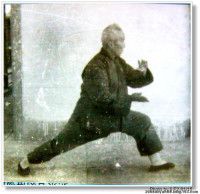
You can also practice more, using the last movement of Six Sealing Four Closing, where you turn the palm from up to down, and the practice is still the exchange of shun and ni. When the palm is up, it is shun, the energy is ji, and when the palm is turning down, it is ni, and the energy is an.
Shun chan to make contact with the opponent, change to ni chan after you are harmonized, which is a process of “overcoming rigidity with softness”. The key to this process is that shun ni transition should be skillful and just right, which means that they can just form a circle after being connected with each other. Only circular movements have the function of “neutralization”, and only with the energy of neutralization can the movements achieve the effect of overcoming rigidity with softness.
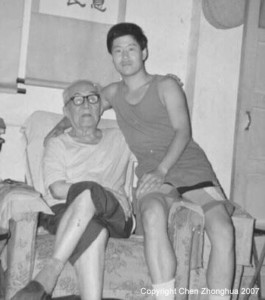
Chen Zhonghua with Grandmaster Hong Junsheng
The exchange of shun chan and ni chan belongs to the category of self-rotation, and Practical Method requires both rotation and revolution. What is a revolution? In fact, revolution is displacement, which is the position change of a certain point relative to a fixed point, which is “movement”. Practical Method does not allow movements. So this displacement is not what it sounds like. In the principles, doing what should not be done but must be done is gong fu. First of all, you can’t violate the principles. You must do it. You must fight against the opponent, and you must put him down. This is impossible without displacement. Many Taijiquan practitioners can’t fight with ordinary people in the end, because they don’t realize this. But how to do this? This is the magic of our Taoist thought. What can’t be done is done indirectly. That is, what modern people say is to find a gap in the legal provisions.
For example, if we can’t move our hands, then we don’t do it, but we can change the relative position of the hands by turning the waist and stepping up to achieve the purpose of revolution. The Positive and Negative Circle of Practical Method are for the practice of revolution.
Originally posted in Chinese by Master Chen Zhonghua. Translation-Yuxin Liu


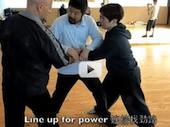
{ 5 comments… read them below or add one }
Thank you for the translation into English. Will share on Facebook.
Nice! Looking forward to part 2…
your life is part two. Use what you learnt… 🙂
‘Nikolai’: This is the first of an excellent well-crafted multi-part piece. Your reply is vapid trite trolling. If you don’t have salient synoptic insight, then say nothing.
Can you bounce any opponent out with forward Peng?